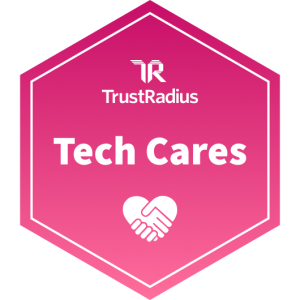
Effective healthcare asset management is critical for optimizing operations, reducing costs, and ensuring top-tier patient care. In modern facilities, managing equipment, inventory, and resources efficiently can make all the difference. This guide explores key strategies and tools to elevate your asset management efforts.
What Is Healthcare Asset Management?
Healthcare asset management is the process of tracking and managing medical equipment to ensure its availability, safety, and efficiency in a facility. It involves overseeing medical assets like infusion pumps and wheelchairs, as well as wireless assets such as iPads, across various departments. By monitoring these assets effectively, healthcare facilities can reduce downtime, improve patient care, and streamline operations. This practice plays a crucial role in maintaining compliance and maximizing resource utilization.
Why Asset Management Systems Are Critical in Healthcare
Hospitals and healthcare facilities manage thousands of high-value assets, ranging from life-saving medical equipment to everyday operational tools. Without effective asset management systems in place, this complexity can lead to delays in care delivery, unnecessary over-ordering, and increased compliance risks that impact both efficiency and patient outcomes.
Improve Equipment Availability
Real-time asset tracking ensures that critical medical equipment is always accessible when and where it’s needed. This dramatically reduces the time staff spends searching for items. By pinpointing the exact location of mobile assets, healthcare teams can respond faster to urgent situations and maintain smoother workflows. This increased visibility not only boosts day-to-day clinical efficiency but also prevents treatment delays that can compromise patient care. Ultimately, it ensures resources are optimally utilized across the facility.
Manage the Full Asset Lifecycle & Maintenance Schedules
Hospitals can manage the full asset lifecycle by monitoring the condition, usage frequency, and age of equipment to make informed decisions about servicing, redeploying, or replacing assets. By keeping track of maintenance schedules, facilities can prevent downtime, ensure compliance, and guarantee that equipment operates safely within prescribed service windows. Detailed asset histories provide valuable insights for smarter capital planning, helping organizations prioritize investments and improve budget accuracy. This proactive approach minimizes disruptions while optimizing resource allocation.
Enhance Patient Care & Safety
Delays in locating critical medical equipment can directly impact patient outcomes by prolonging treatment times or delaying procedures. Asset tracking systems help ensure that necessary equipment is readily available and in the right condition when needed most. Proper tracking also guarantees that only safe, well-maintained, and compliant devices are used in patient care. This reduces risks and enhances overall safety. This improves both the quality of care and the patient experience.
Reduce Operational Costs
A lack of visibility into asset locations and conditions often causes over-purchasing of equipment or under-utilization of existing resources, leading to wasted operational budgets. With detailed usage data, healthcare facilities can accurately assess asset demand, optimize allocation, and prevent redundant spending. This data-driven approach ensures that resources are used efficiently and reduces unnecessary capital expenditure. This allows hospitals to reallocate funds toward critical areas like patient care and innovation.
Streamline Compliance & Reporting
Asset management systems simplify compliance and reporting by maintaining complete, transparent records of inspections, maintenance, and equipment movement. This centralized and readily accessible data reduces the complexity of audits and ensures facilities are always prepared for regulatory reviews. Improved documentation accuracy across departments promotes efficiency, minimizing errors and ensuring consistent adherence to compliance requirements. By streamlining these processes, hospitals can focus more on delivering quality patient care while maintaining regulatory readiness.
Common Challenges in Healthcare Asset Management
Many hospitals still rely on outdated or manual asset management methods, leading to inefficiencies and operational blind spots. These challenges hinder visibility, coordination, and decision-making, impacting overall performance and resource utilization.
Asset Misplacement
Medical equipment is frequently moved between departments, left in hallways, or stored in incorrect locations, making it difficult to locate when urgently needed. This leads to significant time wasted by staff searching for assets, diverting their focus from patient care. The resulting delays can create a ripple effect, disrupting workflows and impacting the timely delivery of critical treatments.
Manual Tracking Limitations
Manual tracking tools like spreadsheets, paper logs, or siloed databases are prone to human error and become increasingly difficult to manage as asset volumes grow. These methods lack real-time visibility into the status or location of equipment, leading to delays and inefficiencies in retrieving and utilizing resources when needed. Modern solutions are essential to overcome these limitations and improve operational clarity.
Lack of Real-Time Visibility
Without real-time location data, hospitals often struggle to determine where equipment is, whether it’s in use, or if it’s available, leading to operational delays and inefficiencies. This lack of visibility hinders informed decision-making, as teams may unknowingly allocate resources improperly or spend unnecessarily on additional equipment to compensate for perceived shortages. Over time, these issues can drive up costs and reduce overall efficiency.
Integration Issues
Many asset management systems lack integration with critical hospital tools like Electronic Medical Records (EMRs) or Computerized Maintenance Management Systems (CMMS), resulting in disconnected workflows. This fragmentation complicates data sharing and makes it challenging to generate accurate, holistic reports. As a result, staff often must manually reconcile information, further reducing operational efficiency.
Key Features of Effective Asset Management Solutions
Modern asset management solutions provide automation, real-time location accuracy, and increased visibility, addressing common challenges like inefficiencies, delays, and fragmented workflows. Cisco Spaces delivers these capabilities by leveraging hospitals’ existing Cisco wireless infrastructure, making it a scalable and cost-effective option.
1. Real-Time Asset Tracking with BLE & Wi-Fi
Real-time asset tracking is made possible with BLE tags and Cisco Wi-Fi access points (Catalyst or Meraki), which enable precise tracking of equipment across rooms, zones, or entire facilities. Cisco Spaces transforms these access points into BLE gateways, eliminating the need for additional hardware. This capability allows clinical and support teams to locate mobile assets in seconds, improving efficiency and reducing delays.
2. Centralized Asset Management Software & Data Analytics
Cisco Spaces offers a cloud-based dashboard that provides real-time visibility into the current location and movement history of tracked assets. Its built-in analytics help identify underutilized equipment, enabling hospitals to optimize purchasing decisions and reduce unnecessary spending. Accessible by IT, clinical operations, and facilities teams, the dashboard ensures a unified view of asset data for streamlined decision-making.
3. Automated Alerts & Geofencing
With Cisco Spaces, users can set rules around critical areas such as operating rooms, ICUs, or exit points to receive automated alerts when an asset moves unexpectedly or remains idle for too long. These configurable alerts, managed through the Spaces dashboard, empower teams to maintain both proactive and reactive asset control. This ensures assets are used efficiently while preventing loss or misplacement.
4. Integration Capabilities
Cisco Spaces seamlessly integrates with existing hospital systems, simplifying workflows and ensuring that asset data aligns with service schedules, maintenance logs, and compliance tracking requirements. By connecting with these systems, it enhances operational efficiency and supports critical regulatory needs. This makes Cisco Spaces a flexible, interoperable solution that integrates into the broader hospital ecosystem, rather than functioning as a standalone tool.
Top Strategies for Successful Asset Management in Hospitals
1. Prioritize High-Value Assets
To achieve a fast return on investment (ROI), start by tracking high-value, mobile assets that are frequently misplaced, such as ventilators, defibrillators, and IV pumps. These items are often life-critical and in high demand, making their availability essential for patient care. By focusing on these assets, healthcare teams can quickly reduce search time, improve utilization, and minimize the risk of purchasing redundant equipment. This prioritization demonstrates immediate value while laying the foundation for broader asset tracking initiatives.
2. Implement Zoning & Geofencing
Implementing geofencing around high-priority areas like ICUs, operating rooms, clean storage rooms, and loading docks helps track the movement of expensive or critical equipment. Teams can set up alerts to monitor when assets enter or exit these zones, ensuring timely intervention if items are misplaced or moved improperly. Zoning not only enhances equipment control but also supports policy enforcement and enables faster recovery of assets, improving overall operational efficiency and reducing downtime for critical processes.
3. Analyze Utilization Data
Hospitals should regularly analyze utilization data to identify patterns of underused or bottlenecked equipment. By understanding how assets are utilized, teams can make smarter decisions regarding purchasing, maintenance, and allocation, ensuring equipment is always available where it’s needed most. This data-driven approach helps optimize resource distribution, reduce unnecessary spending, and improve overall operational efficiency, ultimately enhancing patient care.
4. Train Staff & Standardize Procedures
Successful adoption of asset tracking systems requires comprehensive training for clinical and support staff to ensure they understand how to use the system effectively. Standardized procedures, such as clear SOPs for asset check-in/check-out processes, streamline operations and reduce confusion. Additionally, establishing clear escalation paths for addressing missing items ensures timely resolution, fostering accountability and consistent utilization of the system. Proper training and standardized workflows are key to maximizing the system’s impact on hospital efficiency.
Gain Control of Your Healthcare Assets with Cisco Spaces
Real-time asset management plays a vital role in improving hospital efficiency, safety, and resource visibility, allowing healthcare providers to optimize operations and deliver better patient care. By addressing common challenges like equipment loss, delays, and underutilization, hospitals can reduce costs, enhance workflows, and ensure critical assets are available when needed.
Cisco Spaces leverages your existing Cisco infrastructure to create a scalable, cost-effective, and easy-to-manage real-time asset tracking platform. This innovative solution empowers hospitals to modernize their asset management strategy and gain visibility into their resources, all while simplifying implementation.
Discover how Cisco Spaces can transform hospital operations — visit the experience center today!



